For our series celebrating the 50th anniversary of hip-hop, HuffPost is featuring old and new stories about rap culture. Read the rest of our coverage here.
We spoke at 9:30 a.m. on a Tuesday in January, but, based on how put-together June Ambrose looked, you wouldn’t be able to tell. Showing up dressed to the nines for an early-morning Zoom meeting was standard for a stylist to the stars.
Wearing a navy big-bop cuff hat from Esenshel and two-toned statement glasses, the 51-year-old designer and stylist had just returned from Paris Fashion Week. Ambrose was in attendance at that controversial Schiaparelli runway show — the one with faux animal heads on dresses. She described it as “a bit savage.”
“However, I did enjoy seeing Doja Cat in all the red stones,” Ambrose told HuffPost. “Because they’re comparing it to Missy Elliott’s ‘She’s a Bitch’ moment. I love it.”
Ambrose orchestrated that look in 1999, when a bald Missy Elliott was wearing an all-black, dominatrix-style catsuit from head to toe with encrusted jewels on her brow and forehead as makeup in her music video.
A longtime personal stylist of Jay-Z — he affectionately refers to her as his “secretary of style” — Ambrose has been credited with bridging the gap between high fashion and hip-hop. She is the mastermind behind some of the most memorable looks in hip-hop, from Missy’s “The Rain” to Diddy’s “Mo Money Mo Problems” music videos and so many other iconic moments. To this day, the images and outfits she hand-designed have left a remarkable imprint.
With nearly 30 years of experience in music and fashion, Ambrose has been on a journey reinventing herself. She’s a trailblazer in design and styling and has now embarked on her next fashion adventure: elevating the WNBA and women’s sports. As the creative director at Puma, a role she’s held since 2020, Ambrose harnessed her talents to create her two-part “Keeping Score” collection. The second installment drops in March.
“I recognized that the culture that I shifted in music would be the same kind of culture-shifting conversations I could have with this opportunity,” Ambrose said. “And I was going to take advantage of that. We knew that this was a sport that these girls played just as hard, and they are underpaid and under-supported. This was an opportunity for us to give them life off the court.”
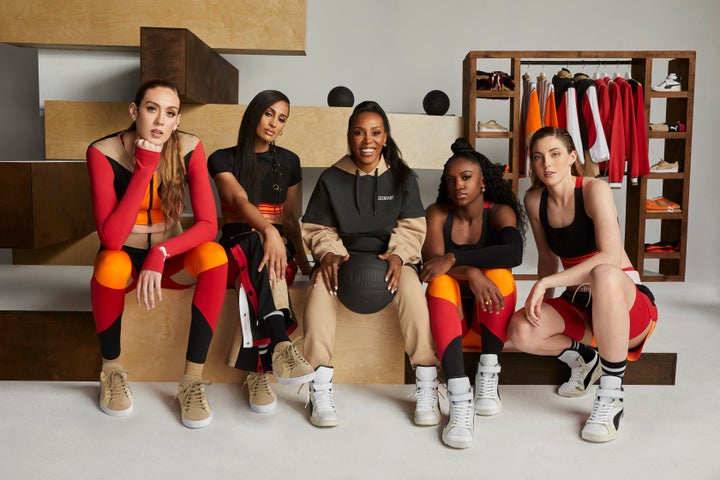
Ambrose isn’t new to challenging social norms and misconceptions. Since her days working with Missy Elliott and other hip-hop legends, she became known for being a risk taker, flipping the script on and redefining masculinity, gender expression, female sensuality and provocativeness in hip-hop fashion.
“I used to give male rappers my female glasses to wear but wouldn’t tell them they were for women,” Ambrose said. “I’d give them something that was not considered hip-hop or that wasn’t gangster looking. I’d say, ‘Thug it out.’ If you own your masculinity, no matter what you put on, that should come through.”
With female rappers, Ambrose sought to help them own their sensuality from within. Be it wearing a baggy pair of pants or men’s boxers, she taught them that the garment doesn’t make the artist.
“I think it comes from us really redefining and understanding the source of sexuality and the source of femininity, the source of ownership of our identity at a very early time,” she said.
“I recognized that the culture that I shifted in music would be the same kind of culture-shifting conversations I could have with this opportunity. And I was going to take advantage of that. We knew that this was a sport that these girls played just as hard, and they are underpaid and under-supported. This was an opportunity for us to give them life off the court.”
- June Ambrose
Before she became an award-winning creative director and costume designer, Ambrose was a Caribbean kid in St. Croix, hosting fashion shows wearing her Sunday’s best. She recalled one of her most memorable runway outfits from a picture with her kindergarten teacher: a tiny June donning a pistachio, A-line babydoll dress with chiffon sleeves and a Peter Pan collar.
“I had said to all the parents after school that we were going to do a fashion show in the lunchroom. They would say all the kids should come in their best outfits, and I organized this with my teacher,” Ambrose said. “After I walked down the aisle, I went and sat on her lap to watch everyone else do it. I was perched there on her lap like an editor-at-large. Maybe that was life telling me something early.”
Ambrose, born in Antigua, moved to St. Croix at 11 months old, then emigrated to the U.S. at the age of 3. There, she and her mother created a home in the South Bronx, living with her mother’s stepmother. Ambrose refers to her “Granny” as her refuge and one of her earliest style inspirations, her very own Diahann Carroll or Dorothy Dandridge.
Describing herself as “very precocious” as a young child, Ambrose said that she always wanted to be seen, grasping early on the power of dress in storytelling and character development. Fashion became her calling card, a means for her to gain respect through disrupting narratives. “I was my first muse,” she said.
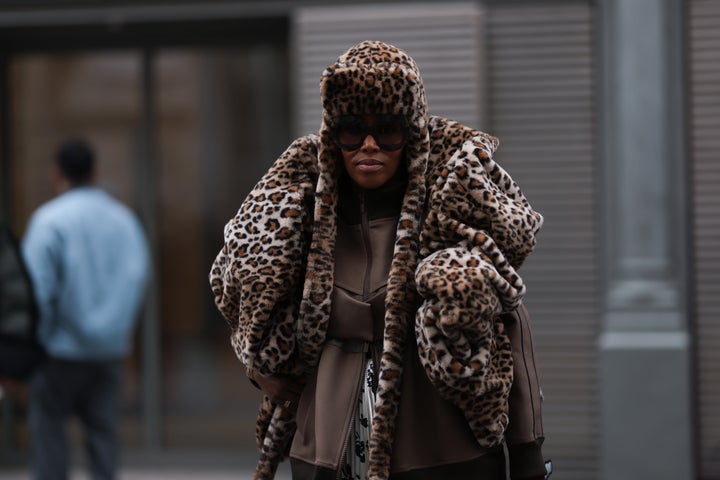
“When I started in the music business, I wanted to create a narrative that felt very unique to my point of view and that was going to also uplift and raise a culture of individuals that I know that deserve to be treated and seen,” she said.
In high school, Ambrose was making costumes in the school’s theater department. Upon graduating from Talent Unlimited Julia Richmond High School for Performing Arts, Ambrose accepted a job at an investment bank, appeasing the wishes of her mother, who wanted her daughter to have a stable weekly paycheck.
But Ambrose couldn’t ignore the creative itch. A former classmate of hers who was working in the marketing department at Uptown MCA Records enlisted her help with styling a photo shoot. No more than three years into corporate America, Ambrose quit her 9-5, became an intern at the label, and the rest is history.
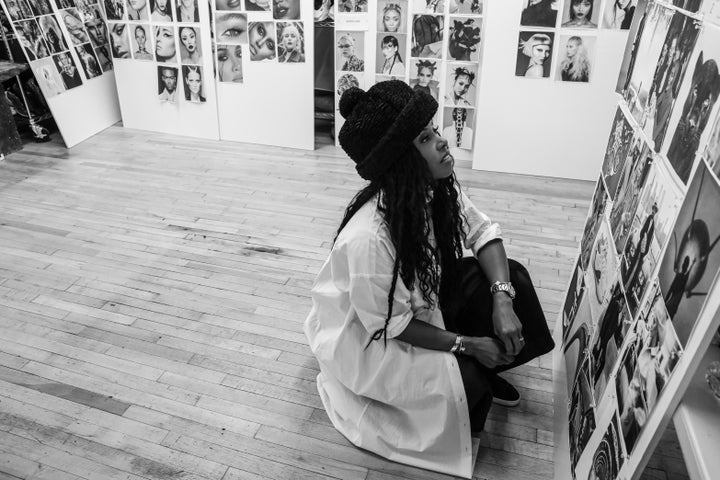
In her styling process, Ambrose emphasizes how collaborative the experience should be, allowing the subject to feel in control. Organic and authentic styling is paramount, and she approaches styling from a place of “creativity, passion and truth.”
“The audience is supposed to look at them and think [the subject] did it themselves,” she said.
Ambrose, who stills gets butterflies before every job she does, is meticulous and intentional in her work. Among her favorite music videos she designed and styled are Busta Rhymes’ “Put Your Hands Where My Eyes Can See” and “Gimme Some More,” working on Mariah Carey’s “Emancipation of Mimi” along with Jay-Z’s “Feelin’ It.”
“Designing one of Jay-Z’s first suits for ‘Feelin’ It’ in Jamaica,” said Ambrose. “That yellow linen suit was really nice because I really wanted him to feel like he was just out of ‘Casino Royale,’ in the South of France. I wanted the perfect yellow, and I couldn’t find it. So I was just like, ‘I’m going to make it.’”
She’d go on to foster major collaborations between her clients and various brands, such as Missy Elliott’s “Respect M.E.” x Adidas collection in 2004. But as designer labels have become embedded into hip-hop culture and name-dropped in unforgettable lyrics, fashion houses benefit from the name recognition but are still reluctant to lend clothes to Black artists and Black stylists. (In an interview with XXL, fashion legend Misa Hylton recalled how luxury designers refused to let her pull clothes for her clients, such as Mary J. Blige and Jodeci.)
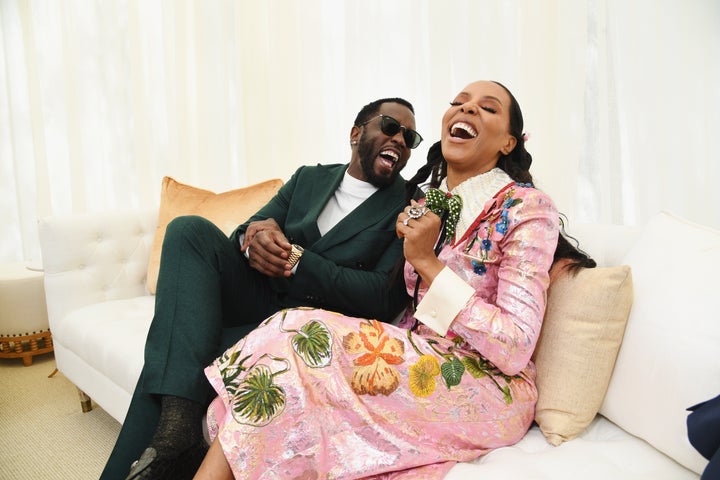
“I’ve lived through fashion houses not seeing us and not waiting for them to invite us in or ask for permission to create this kind of visual that was provocative enough to take notice,” Ambrose said. “They’ve had to circle back because we had consumed the consumer, and we were influencing them.”
Ambrose says that, although there’s more progress to be made, the relationship between fashion and hip-hop has evolved as fashion brands are collaborating more with the culture’s pioneers. (Recently, LVMH tapped Pharrell to be the fashion house’s new men’s creative director.)
Her experience in music would serve her well as she moved into her creative director role at Puma in 2020. It would be her own client Jay-Z, along with Roc Nation business partner Emory Jones, who introduced Ambrose to Chief Brand Officer Adam Petrick. Her partner is the one who pushed Jay-Z to make it happen, she said.
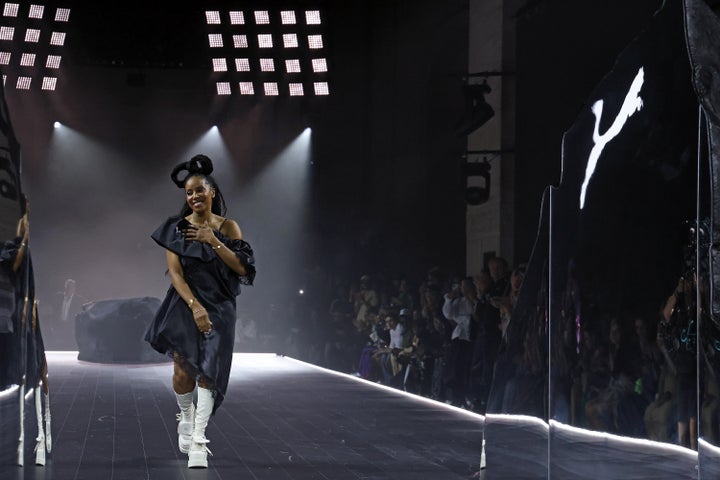
The timing couldn’t have been better, she said. She signed on to the brand in 2018 and became creative director in 2020. At Puma, Ambrose led the label’s return to New York Fashion Week in September 2022, creating more than 40 custom looks for the brand’s Spring/Summer 2023 collection.
She has continued to be a champion for people who deserve to be seen, highlighting women in sports and, more specifically, the WNBA. Ambrose launched the brand’s women’s basketball division in 2020 and its first collection in 2021, an initiative that made Breanna Stewart the 10th woman in WNBA history to receive their own signature shoe.
Now Ambrose’s first co-branded collection with Puma, titled “Keeping Score,” is ready. The first drop was on Jan. 26 and features deeper colors, such as burgundy and blues, and sporty silhouettes that are functional and versatile for numerous body types. The second release is slated for March 16 and highlights more green, white and blue, which Ambrose says is inspired by retro tracksuit silhouettes, varsity jackets ― bridging old school and new school.
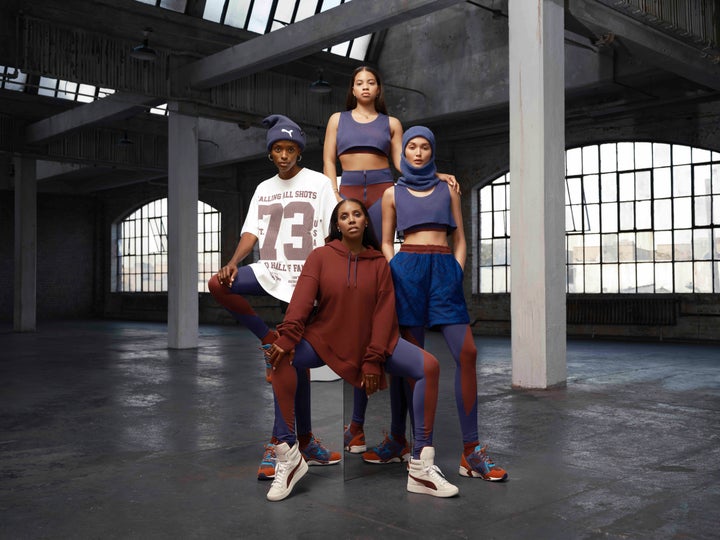
The timing of the women’s basketball collection is momentous: It marks her 29th year as a costume designer, stylist and creative director, the 50th anniversary of hip-hop and the celebration of Puma’s 75th anniversary.
“I was keeping score then, and I’m keeping score now. I’m paying attention to who’s giving back, how we’re paying it forward, how we are building,” Ambrose said. “I want to really brand that phrase. It’s bigger than just the words, but it’s in the action.”
In that vein of self-reflection, the first drop is a 20-piece collection that is “intentionally parochial and has a sophisticated sense of age,” she said.
In the second half of her life, she said, she wants every chapter, as it has been, to be meaningful. The biggest lesson she says she’s learned is to trust herself.
“It’s a great reinvention,” said Ambrose. “I think the biggest lesson is to trust myself and know that I’m enough. With every closed door, there’s either one you can build or another that will open.”
For our series celebrating the 50th anniversary of hip-hop, HuffPost is featuring old and new stories about rap culture. Read the rest of our coverage here.

